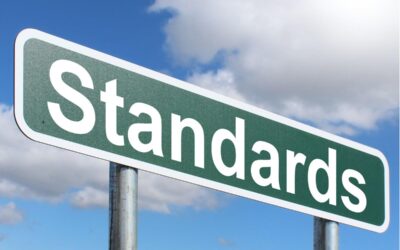An increasing amount of overseas companies are registering their trademarks in China. While following the updated intellectual property (IP) regulations in China, solely registering the trademark is not sufficient. In certain cases, your trademark can be revoked or cancelled by the administrating Trademark Office. In this article, the reasons for trademark revocation, the consequences, and methods to prevent this revocation in China are addressed.
Introduction
Trademark revocation could happen to a successfully registered trademark. This happens most frequently when the owner of the trademark uses or administrates the trademark improperly. In the case that a trademark gets cancelled or revoked, the company suffers not only economic losses but also the corporate image, branding and marketing strategies can be negatively impacted. In combination with the revoking or cancellation of the trademark, the owner of the trademark also risks the permanent loss of the trademark. To avoid unnecessary hassle around trademark management, especially foreign investors should be acquainted with the everchanging regulations around (protecting) Intellectual Property.
The Trademark Law of China, emphasises that a registered trademark can be both cancelled or revoked by the Trademark Office for a multitude of reasons. Here are the four main reasons described:
- The trademark registrant fails to renew the trademark in time.
After the date of registration, the registered trademark is valid for ten years. Within the 12 months before the expiry date of the trademark, the registrant is able and ought to renew the trademark. Whenever the registrant does not complete the formalities before this stipulated period, an extension of six months (grace period) can be possibly allowed. If the registration is not completed within this “grace period”, the trademark gets cancelled.
- Trademark fail to use the trademark properly.
The Chinese trademark law argues that the trademark needs to be consistently used with the registered trademark. Changes to the registration data, such as inconsistencies in colour, font, logo, combination of elements, etc. are seen as the non-standard usage of the trademark. In this case, the trademark registrant is ordered to clarify these disputes by the local administration for market regulation (local AMR). Whenever the registrant does not follow this order, the Trademark Office will revoke the registered trademark.
- The trademark registrant fails to practically and continuously use the registered trademark.
The Chinese trademark law obliges that the registered trademark needs to be continuously and actively used for the registered product/service. Further, the trademark should be used in the registered region (e.g. Beijing). If the trademark is unutilized for over three years consecutively, and there is no legal reasoning behind the lack of usage, any organisation or individual can apply to the Trademark Office for revocation of this particular trademark. In recent years, the lack of actual and continuous usage of the trademark is the most common cause of trademark revocation in China.
- The trademark becomes a generic name of the approved commodity
In the case when a certain name can refer to a class of goods Chinese law emphasises that this name shall be recognized as a generic overarching name. China-Briefing mentions that the brand name Simmons (席梦思) has its origin as a trademark registered in the United States by Mr Zalmon G. Simmons. The trademark “Simmons” was used for his mattress brand, however, it quickly became widely used in China to refer to “refined spring mattress”. As the name for a special good became applicable to the commodity of a spring mattress, the Trademark Office declined the registration of this trademark in 2015 due to becoming a generic name in Chinese society. In the Netherlands, this shift from good to commodity is comparable to the activity around the brand name “ty-rip”. Whereas this product launched in 1958 as a stand-alone product, the name “ty-rip” is now utilized for all products looking like or having a similar function as the original ty-rip.
Knowing that trademark revocation after three-year inactivity is the most common reasoning for trademark revocation, the underlying incentive to let the Trademark Office revoke another’s trademark is obvious. Living in the era of globalisation and developing technology, all market players can stay updated on others’ intellectual property. Applicants revoking another’s trademark can use this to take advantage. The business value attached to the trademark can be destroyed by revoking or cancelling the trademark.
However, this attached value can also be used to gain own profit by using this business value or by linking their own products to this trademark. Another case can be that their own trademark registration is blocked by the Trademark Office due to the similarities to this already existing trademark. All these reasonings can be a strategical approach to entering the (Chinese) market or to eradicate the competition.
Revoked or cancelled trademark
When the trademark gets revoked or cancelled, the trademark cannot be legally used on the registered goods/services. Trademark owners continuing to use their trademark, do not only act against the Chinese trademark law but can also infringe the other’s similar trademark which can lead to a lawsuit and economic compensation liabilities.
While losing the trademark can result in economic losses, disputes in the corporate image, and incoherent marketing strategies, the following year the revoked/cancelled trademark cannot be re-approved by the Trademark Office. This means that a similar trademark will also not be approved. In this case, the registrant needs to wait for minimally a year to re-apply for the trademark. After one year, the competitor is also able to simultaneously apply for their trademark. In China’s “first to file” approach, this can lead to the loss of your original trademark.
In the case that trademarks are applied to be revoked by others, the trademark owner receives a request from the Trademark Office to reply within two months to receive additional information. Included in this data are:
- Defend that the trademark is not a generic name
- Showcase evidence of actual use in the last three years of the trademark
- State the reason for not using the trademark
This information can be provided in various document types (e.g. invoices, contracts, etc.) and is analysed by the Trademark Office. If the evidence is deemed effective, the Trademark Office will reject the other party’s request. However, if the information is insufficient the trademark will get revoked by the Trademark Office.
Conclusion
To conclude, registering your trademark in China is not sufficient. To prevent the cancellation or revoking of your trademark in China, assure to continuously utilize the trademark according to the Chinese trademark regulations. Lastly, be assured to take action and reply within the given period to prevent revocation as raised by another party.
Sources:
Trademark Revocation in China: A Practical Guide (china-briefing.com)
The “use” requirement in trademark revocation cases in China – HEFFELS SPIEGELER ADVOCATEN
Trade Marks Laws and Regulations Report 2022 China (iclg.com)



